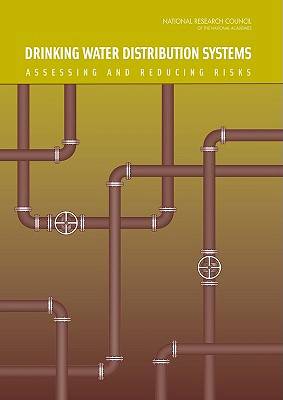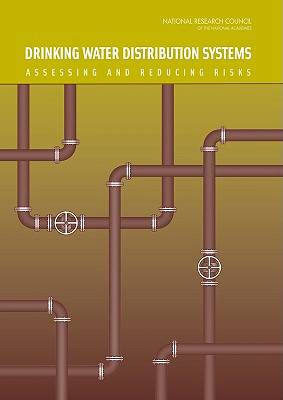
Door een staking bij bpost kan je online bestelling op dit moment iets langer onderweg zijn dan voorzien. Dringend iets nodig? Onze winkels ontvangen jou met open armen!
- Afhalen na 1 uur in een winkel met voorraad
- Gratis thuislevering in België vanaf € 30
- Ruim aanbod met 7 miljoen producten
Door een staking bij bpost kan je online bestelling op dit moment iets langer onderweg zijn dan voorzien. Dringend iets nodig? Onze winkels ontvangen jou met open armen!
- Afhalen na 1 uur in een winkel met voorraad
- Gratis thuislevering in België vanaf € 30
- Ruim aanbod met 7 miljoen producten
Zoeken
Drinking Water Distribution Systems
Assessing and Reducing Risks
National Research Council, Division on Earth and Life Studies, Water Science and Technology Board, Committee on Public Water Supply Distribution Systems Assessing
Hardcover | Engels
€ 107,95
+ 215 punten
Omschrijving
Protecting and maintaining water distributions systems is crucial to ensuring high quality drinking water. Distribution systems--consisting of pipes, pumps, valves, storage tanks, reservoirs, meters, fittings, and other hydraulic appurtenances--carry drinking water from a centralized treatment plant or well supplies to consumers' taps. Spanning almost 1 million miles in the United States, distribution systems represent the vast majority of physical infrastructure for water supplies, and thus constitute the primary management challenge from both an operational and public health standpoint. Recent data on waterborne disease outbreaks suggest that distribution systems remain a source of contamination that has yet to be fully addressed. This report evaluates approaches for risk characterization and recent data, and it identifies a variety of strategies that could be considered to reduce the risks posed by water-quality deteriorating events in distribution systems. Particular attention is given to backflow events via cross connections, the potential for contamination of the distribution system during construction and repair activities, maintenance of storage facilities, and the role of premise plumbing in public health risk. The report also identifies advances in detection, monitoring and modeling, analytical methods, and research and development opportunities that will enable the water supply industry to further reduce risks associated with drinking water distribution systems.
Specificaties
Betrokkenen
- Auteur(s):
- Uitgeverij:
Inhoud
- Aantal bladzijden:
- 404
- Taal:
- Engels
Eigenschappen
- Productcode (EAN):
- 9780309103060
- Verschijningsdatum:
- 22/01/2007
- Uitvoering:
- Hardcover
- Formaat:
- Genaaid
- Afmetingen:
- 155 mm x 229 mm
- Gewicht:
- 780 g

Alleen bij Standaard Boekhandel
+ 215 punten op je klantenkaart van Standaard Boekhandel
Beoordelingen
We publiceren alleen reviews die voldoen aan de voorwaarden voor reviews. Bekijk onze voorwaarden voor reviews.











